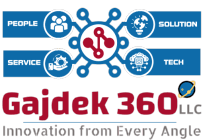Written by Ashwin Chaudhary, CEO, Accedere.
Cloud workload refers to the various tasks, applications, services, and processes run in cloud
computing environments. Cloud workloads allow for scalability, flexibility, and efficiency,
enabling businesses and individuals to access and run applications or data processing tasks
without investing heavily in physical hardware. Cloud workloads encompass a range of
resources, including virtual machines (VMs), containers, serverless functions (also referred to
as function as a service (FaaS)), AI, and platform as a service (PaaS). The dynamic nature of
cloud environments, with their constantly changing and expanding resources, requires a
distinct approach to security compared to traditional methods. Cloud Security Alliance’s
Security Guidance v5.0 Covers Cloud workload security in Domain 8.
Types of Cloud Workloads
- Virtual machines (VMs) and instances: VMs, also called instances, are a cornerstone
of cloud computing. They offer isolation through separate operating systems and
enforced security boundaries by the hypervisor and other management plane
components. The hypervisor is a key component maintained by the cloud service
provider (CSP). - Containers: These are isolated runtime environments that share the host operating
system’s kernel but run as separate, self-contained processes with their own file
systems, libraries, and configurations. Containers provide a lightweight and efficient
alternative to VMs but present different security challenges. Since containers share the
host OS kernel, they inherently offer weaker isolation. - Platform as a Service (PaaS): These workloads extend the functionality of cloud
platforms by offering a suite of tools and services that facilitate the development,
deployment, and management of applications with greater efficiency and less
overhead. - Serverless or Function as a Service (FaaS): FaaS is a cloud computing model
whereby developers write and deploy individual functions that are executed in
response to events or requests, without the need to manage the underlying
infrastructure. - AI Workloads: These workloads process vast amounts of data to learn, make
decisions, or offer predictions. AI Workloads leverage the advanced computational
resources and scalability of cloud environments. These workloads enable machines to
learn from data, make predictions, and simulate human intelligence in decisionmaking processes.
Security Considerations
Cloud Workload Management
- Create a centralized Cloud Deployment Registry: Maintain a comprehensive inventory
of all cloud workloads and deployments for efficient tracking and management. - Define an organization hierarchy using multiple deployments: Structure cloud
environments to mirror organizational units for better security and administrative
control. - Support a low-friction process for creating new deployments: Streamline processes to
ensure adherence to security policies without impeding operational efficiency. - Enforce secure base VM images: Use centrally managed, versioned, and immutable
base images for all deployments. - Regular patching and updates: Automate patch management for containers, hosts,
and orchestration platforms. - Utilize security benchmarks and tools: Follow CIS benchmarks for Kubernetes to
ensure secure configurations. - Implement continuous monitoring: Use real-time monitoring tools to track workload
activities and detect potential security incidents quickly. - Security Information & Event Management (SIEM) needs to be implemented which
provides real-time monitoring and reporting. - Multi-factor authentication (MFA): Enhance access controls with MFA.
- Periodic access reviews: Regularly re-evaluate access permissions to ensure
appropriate access levels. - Supply chain security: Define cybersecurity policies, regularly audit third-party
dependencies, and use trusted sources.
The core of cloud workload security lies in maintaining data integrity, confidentiality, and
availability — principles that are the bedrock of cybersecurity. In the cloud, it is vital to ensure
that data is unaltered (integrity), only accessible to authorized users (confidentiality), and
available when needed (availability). Cloud workload protection is an evolving discipline that
addresses the unique security challenges found in the diverse and dynamic nature of cloud
environments. Traditional security measures are insufficient in the cloud; hence, specialized
controls are necessary to safeguard various workloads effectively.
About the Author
Ashwin Chaudhary is the CEO of Accedere, a Data Security, Privacy Audit, Technical
Assessment and Training Firm. He is a CPA from Colorado, MBA, CITP, CISA, CISM, CGEIT,
CRISC, CISSP, CDPSE, CCSK, PMP, ISO27001 LA, ITILv3 certified cybersecurity professional with
about 22+ years of cybersecurity/privacy and 40+ years of industry experience. He has
managed many cybersecurity projects covering SOC reporting, ISO audits, VAPT
assessments, Privacy, IoT, Governance Risk, and Compliance.



0 Comments